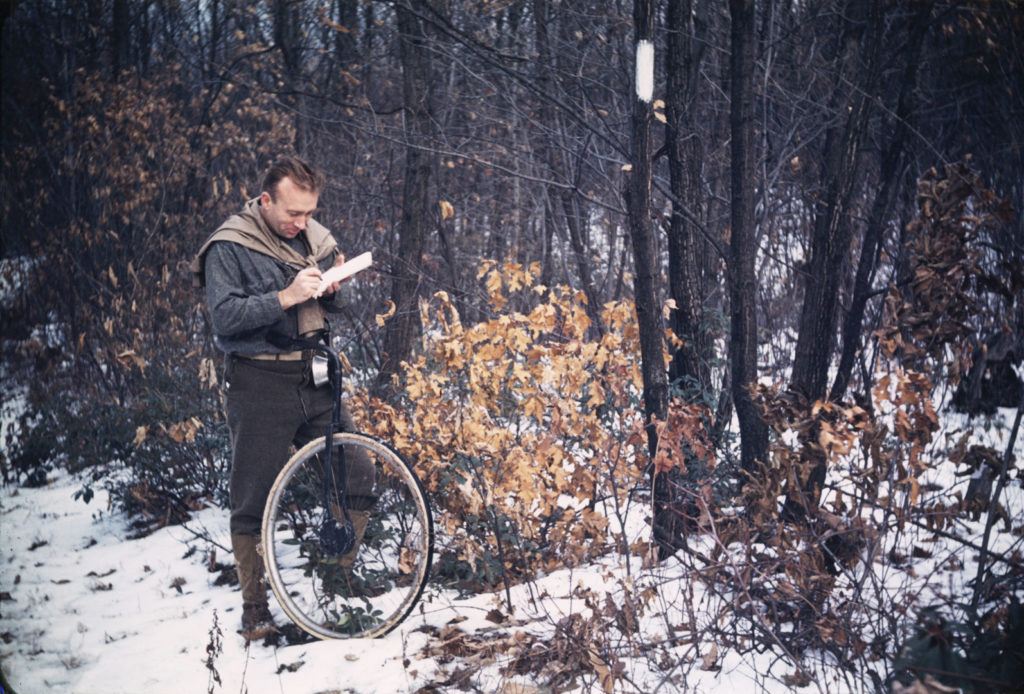By Jordan Bowman, ATC Director of Communications
The Trail’s Voice on Capitol Hill
October 20, 2020
A key part of protecting the Appalachian Trail (A.T.) involves ensuring the legal protections for the A.T. and its surrounding lands remain strong. That is why the Appalachian Trail Conservancy must be a strong voice for the A.T. on Capitol Hill.
To be a strong voice, the ATC remains actively involved in shaping federal policy decisions that could affect the long-term protection of the A.T. As policymakers consider issues that could affect the Trail — such as climate change and encroaching development — it is essential for the ATC (and advocates such as you) to help policymakers understand the potential impact of their decisions on the A.T., its surrounding landscape and Trailside communities.
The ATC’s involvement in federal legislation was critical from the start. While the A.T. became a continuous footpath from Georgia to Maine in 1937, the years that followed highlighted how fragile the Trail’s existence truly was. A hurricane the next year wiped out much of it in New England, and volunteers were soon called up for the war effort. The economy rapidly expanded after World War II, and the resulting urban sprawl and development led to significant Trail relocations — some measuring 75 to 150 miles in length — in order to maintain the integrity of the A.T. experience. Myron Avery, in his final report as ATC chair in 1952, wrote, “Some form of public protection must be extended to the Trail system if it is to survive as a through, continuous recreational unit.”

Former ATC chair Myron Avery measures a section of the A.T.
Heeding Avery’s call, the ATC, in partnership with Trail maintaining clubs and countless supporters, and with President Lyndon Johnson’s full support, advocated for Congress to pass the National Trails Systems Act (NTSA) in 1968. This legislation became the cornerstone of A.T. protection, granting it — and later ten additional national scenic trails — the same protections as Yosemite, Yellowstone and all other national parks.
The Trail has seen additional major policy successes since the passing of the NTSA. The most recent collective victory was the enactment of the Great American Outdoors Act, which permanently funds the Land and Water Conservation Fund (LWCF) and establishes a $9.5 billion restoration fund to address deferred maintenance projects on public lands, including at least $24 million in delayed projects on the A.T. alone. Behind these and other major successes is nearly a century of work by the ATC, both through wide-scale public outreach and one-on-one conversations with policymakers, to bring attention to, and fight for, policies that will benefit the A.T. directly.
“As advocates for the Trail, it is our job to make sure policymakers don’t see the Appalachian Trail as a world apart, but rather as something that can be affected by a broad range of policies,” said Brendan Mysliwiec, ATC’s director of federal policy and legislation. “On any given day, we could be weighing in on numerous topics that could impact the Trail, positively or negatively, from infrastructure policy to funding for conservation projects. It is vital for us to understand these impacts and to make sure members of Congress are aware of how their decisions will affect the A.T. and beyond.”

A key role of the ATC and A.T. advocates is to make sure Members of Congress understand how the policies they enact could affect places like the Appalachian Trail.
So many of us revel in our ability, as A.T. visionary Benton MacKaye said, “To walk… to see… [and] to see what you see.” While the A.T. footpath itself is largely protected by the NTSA, its surrounding lands and the integrity of the Trail’s hiking experience are still subject to significant threats. These lands are more than a beautiful place to hike. They contain essential habitats for thousands of species of flora and fauna. They help mitigate the impacts of climate change. They protect a world-class recreational experience. They, in essence, are home to the sources of life.
Successes such as the NTSA and the Great American Outdoors Act are proof of what we can accomplish when we tell our policymakers what we care about. To ensure this iconic American landscape is protected forever for all to enjoy, we must do more than “see.” We must all continue to be a voice for the Trail, ensuring that the needs of the A.T. are known beyond those who hike it, but also to those who can help us ensure the benefits of the Trail remain forever.
Your support allows us to be a voice for the Appalachian Trail, helping ensure it will continue to benefit us all for generations to come.
Header image by Deanna Buchanan
Discover More

Stay Informed
Latest News
Read the latest news and updates about the Appalachian Trail and our work to protect it.

ATC's Official Blog
A.T. Footpath
Learn more about ATC's work and the community of dreamers and doers protecting and celebrating the Appalachian Trail.

Be a Voice for the Trail
Advocacy
Whether on the Appalachian Trail or on Capitol Hill, obstacles arise every day that threaten the Appalachian Trail. We're here to protect it. Learn more about how we stand up for the A.T. and it's surrounding landscape — and how you can help.
